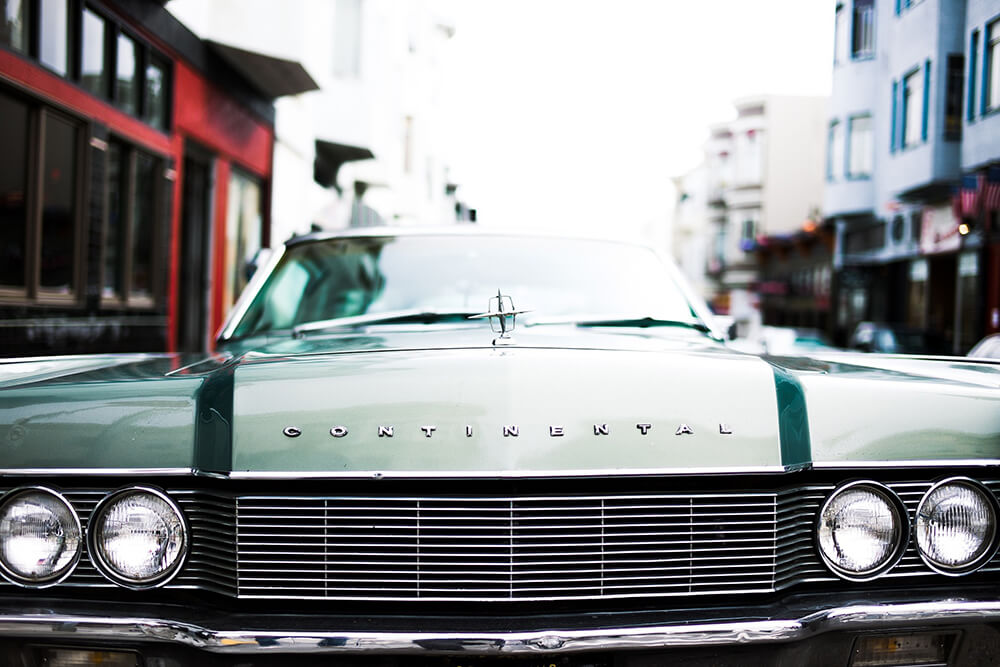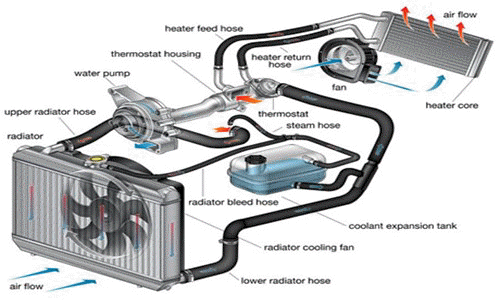 Your radiator protects your engine and air conditioning condenser from overheating. It also plays an important role with the computer controlled system. An engine temperature sensor actually tells the computer what the engine temperature is so the computer can adjust the air and fuel mixture and engine timing. The efficiency of the radiator directly effects the efficiency of your engine.
Your radiator protects your engine and air conditioning condenser from overheating. It also plays an important role with the computer controlled system. An engine temperature sensor actually tells the computer what the engine temperature is so the computer can adjust the air and fuel mixture and engine timing. The efficiency of the radiator directly effects the efficiency of your engine.
That’s why flushing the cooling system and pH balancing the coolant is recommended at least once every two years.
Our coolant system power flush continuously forces fluid under pressure through the engine, radiator and heater core in both directions at different times to remove contaminates. We pressure test the cooling system for leaks, clean the recovery bottle and pressure test the radiator cap. The system is then refilled with the proper mix of coolant and water to reach the -35 degrees for winter protection.
Let our certified technicians perform this service today.
Cooling System Maintenance
What Our ASE Certified Technicians Do
The following components are inspected. Their condition is recorded and compared to manufacturer’s specs. Recommendations are made per the Motorist Assurance Program Uniform Inspection Guidelines:
Heating and Air Conditioning Systems
 Visual Inspection
Visual Inspection
- Interior controls and blower
- Radiator coolant level, hoses, pressure cap and thermostat
- The A/C compressor belt for condition and tension
- Leaks or other damage
- Component condition, leaks or damage
Heating and Air Conditioning Tests
- Pressure test engine cooling system
- A/C system pressures are measured and compared to manufacturer’s specifications
- A/C system is leak tested
- Both the heater and A/C are performance tested by checking the outlet air temperature at the discharge vents
We’re often asked questions about the cooling system is the system that cools your engine and keeps it at the proper operating temperature. Let’s examine the topic in two areas: first the coolant itself and, second, the parts that make up the cooling system.
The coolant in your car or light truck is the mix of water and antifreeze that circulates through the engine to draw off heat. First, you need to have the proper amount. If you don’t have enough coolant it can’t keep your engine cool.
You also need the right kind of coolant. Different makes of sedans and other vehicles require different coolant formulation to protect against corrosion.
Finally, your coolant needs to be fresh. Over time and miles, the anti-corrosion additives in the coolant are depleted and the coolant can actually start to eat away at the cooling system parts. Your owner’s manual and your Doc Motor Works service adviser in Shorewood, Illinois can help you with the recommended coolant replacement schedule and make sure you’re getting the right type of coolant.
Now let’s talk about the cooling system components. These will all eventually wear out and need to be replaced.
Starting with the radiator, we see them coming into the shop with leaks or clogged with deposits. Depending on the damage, we will clean, repair or replace. We also see radiator pressure caps that can no longer hold the proper pressure. We recommend replacing pressure caps when you change your coolant to avoid this problem.
We see leaky water pumps and hoses in the Joliet Illinois area that need to be replaced, too. There’s also a part called the thermostat that opens and closes to regulate the flow of coolant. Sometimes they stick open or closed and the cooling system won’t work properly.
Engine damage from overheating can be very expensive to fix so it is important to maintain your cooling system properly with scheduled coolant replacement and periodic inspections of the cooling system. Certainly come in if you suspect a leak and have us take a look.

